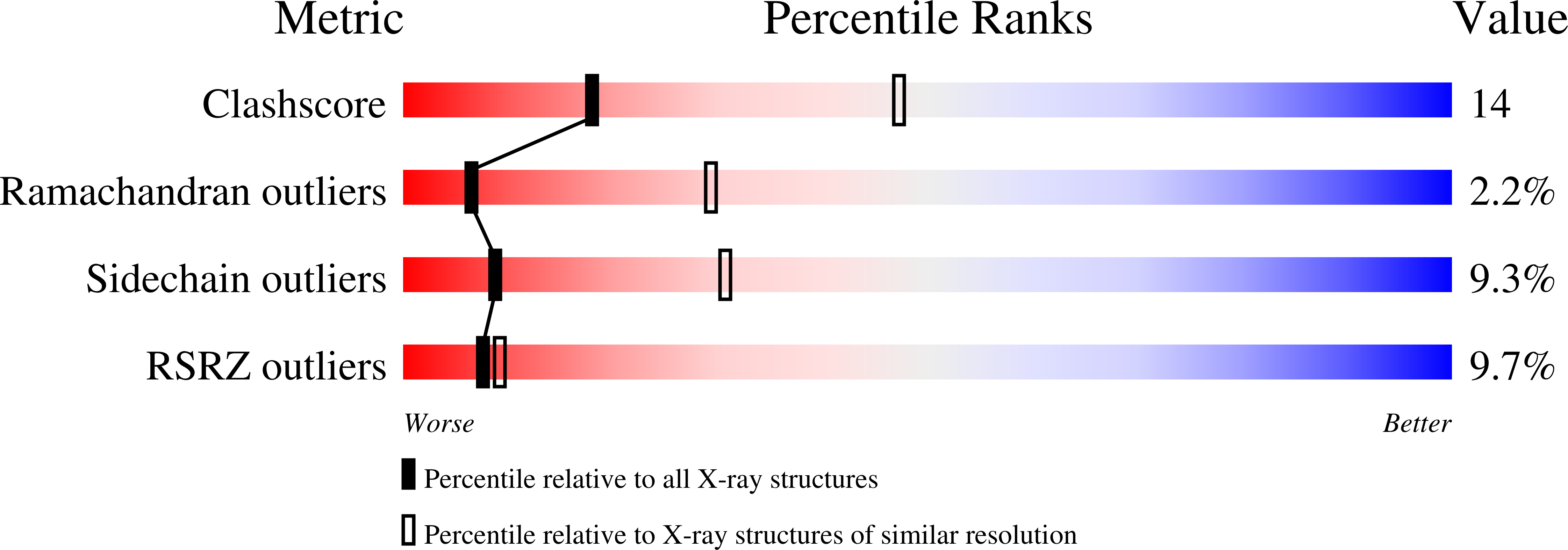
Deposition Date
2005-05-19
Release Date
2005-08-30
Last Version Date
2024-11-20
Entry Detail
PDB ID:
1ZR4
Keywords:
Title:
Structure of a Synaptic gamma-delta Resolvase Tetramer Covalently linked to two Cleaved DNAs
Biological Source:
Source Organism:
Escherichia coli (Taxon ID: 562)
Host Organism:
Method Details:
Experimental Method:
Resolution:
3.40 Å
R-Value Free:
0.29
R-Value Work:
0.26
R-Value Observed:
0.26
Space Group:
P 21 21 21


